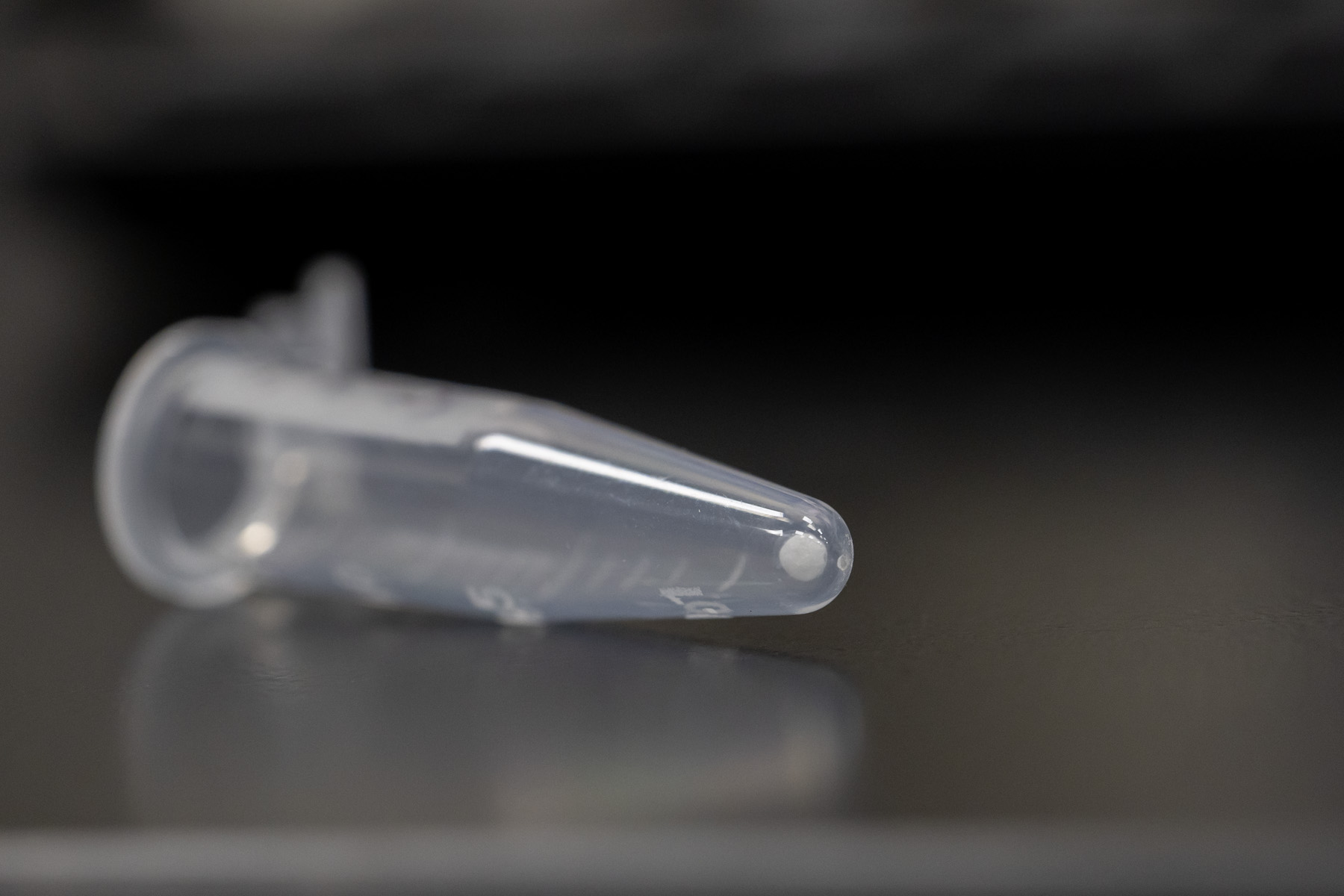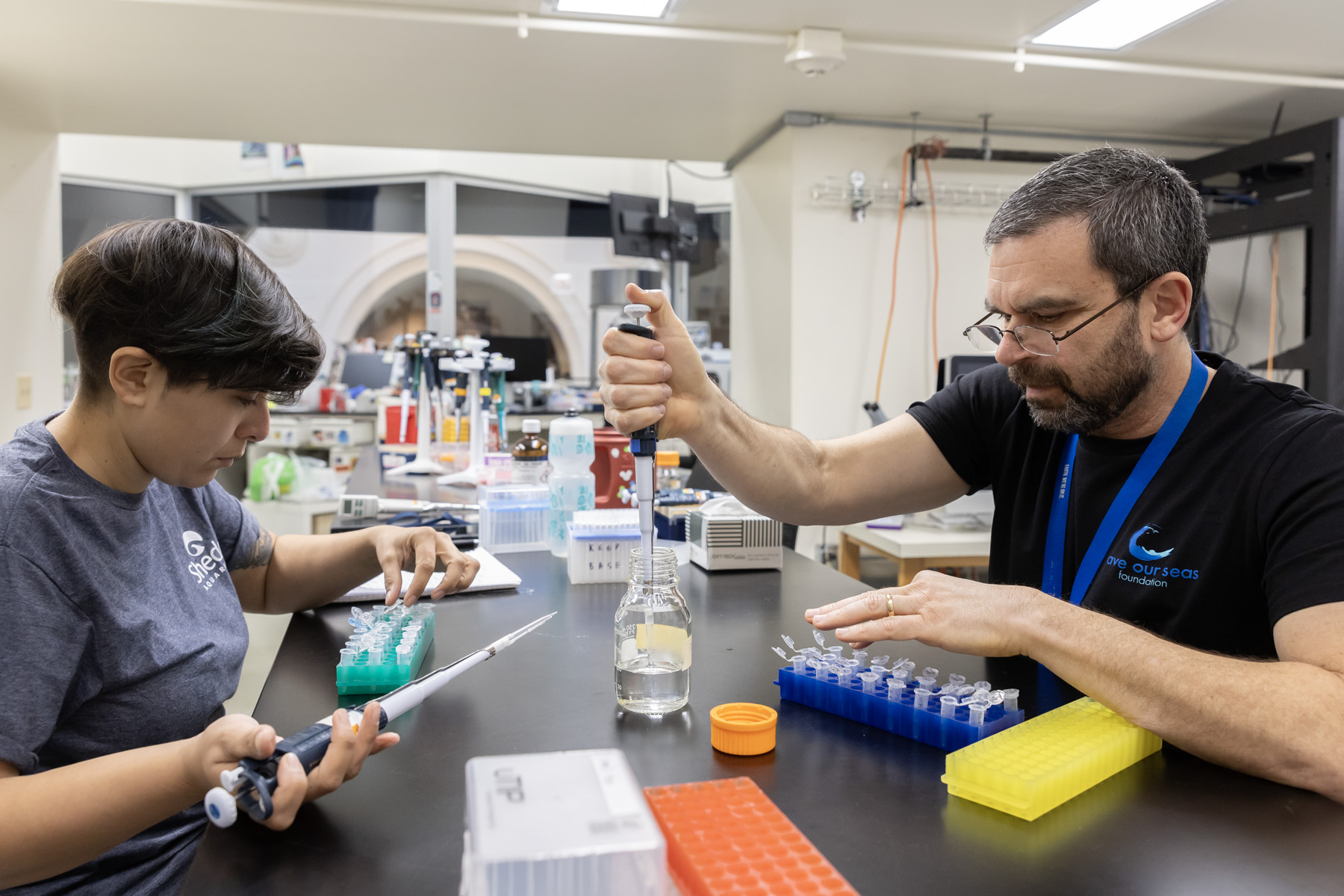Conservation genetics can help unravel the mysteries of the Caribbean reef shark
Over the past year, hundreds of genetic samples have made their way from warm Caribbean waters to the frigid Midwest and now reside in freezers at Chicago’s Field Museum of Natural History where they await genetic analysis. More than 700 fin clips from the Caribbean reef shark (Carcharhinus perezi) were collected as far away as Brazil, the Cayman Islands, The Bahamas and Belize — some over 20 years old! Time, age, and travel, however, are no match for the DNA contained within, a structurally robust compound that can withstand temperatures up to 190°C.
DNA extraction can be thought of as removing tissue from DNA, rather than the other way around. First, the shark fin samples are left overnight in a warm bath of enzymes and extraction buffers to dissolve tissue and release the genetic material from the cell’s nucleus. The remaining slurry of proteins and DNA is then separated in a process involving alcohol baths, centrifuging, and drying, ultimately resulting in an ultra-concentrated DNA pellet visible to the naked eye!

Caribbean reef shark DNA in solid form after extraction. Photo © Shedd Aquarium/Brenna Hernandez
So what is the purpose of this work — akin to something you might see on a popular television show like CSI — on Caribbean reef sharks and other species?
As sequencing tools became more accessible to scientists in recent decades, the field of conservation genetics grew to be useful in a number of ways. Of course, data on genetic variability across a single population can tell us how resilient or vulnerable it is. But conservation geneticists have learned to leverage this scientific technique to come up with new and creative ways to protect our oceans and the species that inhabit them. For example, genetic analysis done on meat served in sushi restaurants helped uncover illegal whale trading. Researchers are using genetic markers to identify coral algal symbionts to understand why some populations are more resilient to climate change. And DNA sequencing is giving us the power to understand the systematics and evolutionary history of fishes in ways that field observations never could. By understanding and quantifying genetic diversity, scientists can make recommendations on the protection of biodiversity “hotspots” that may harbor disproportionately high amounts of the ocean’s total genome.

DNA analysis can provide information on genetic diversity, population structure, and mating behavior. Photo © Shedd Aquarium/Brenna Hernandez
As for Caribbean reef sharks, scientists at Shedd Aquarium and the Field Museum will be sequencing and analyzing the international genetic samples to understand the range and population structure of this endangered species. What is the Caribbean reef shark’s total geographic range? How far do they migrate to mate, if at all? Are populations isolated within their reef ecosystems or connected across the Atlantic? These samples have the power to shed light on these important questions and improve the recovery potential and conservation of this endangered species.
